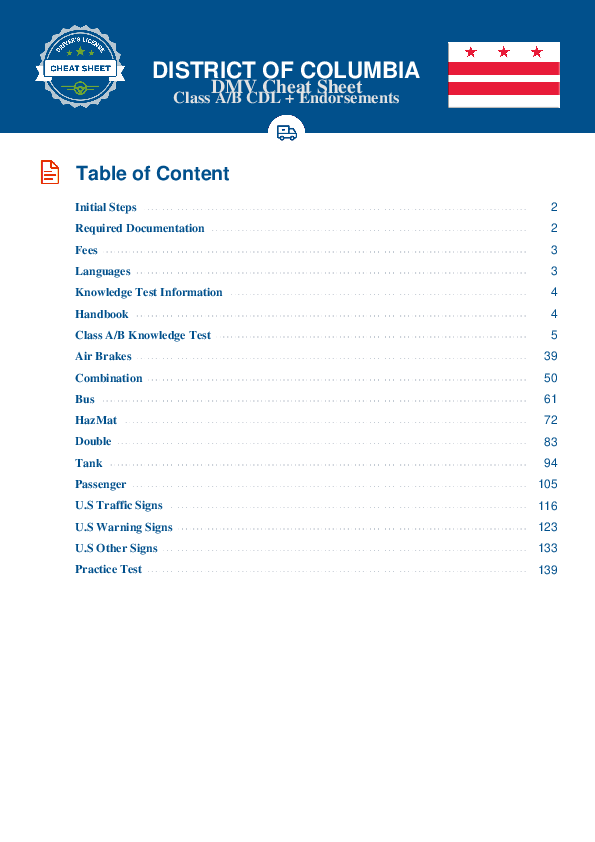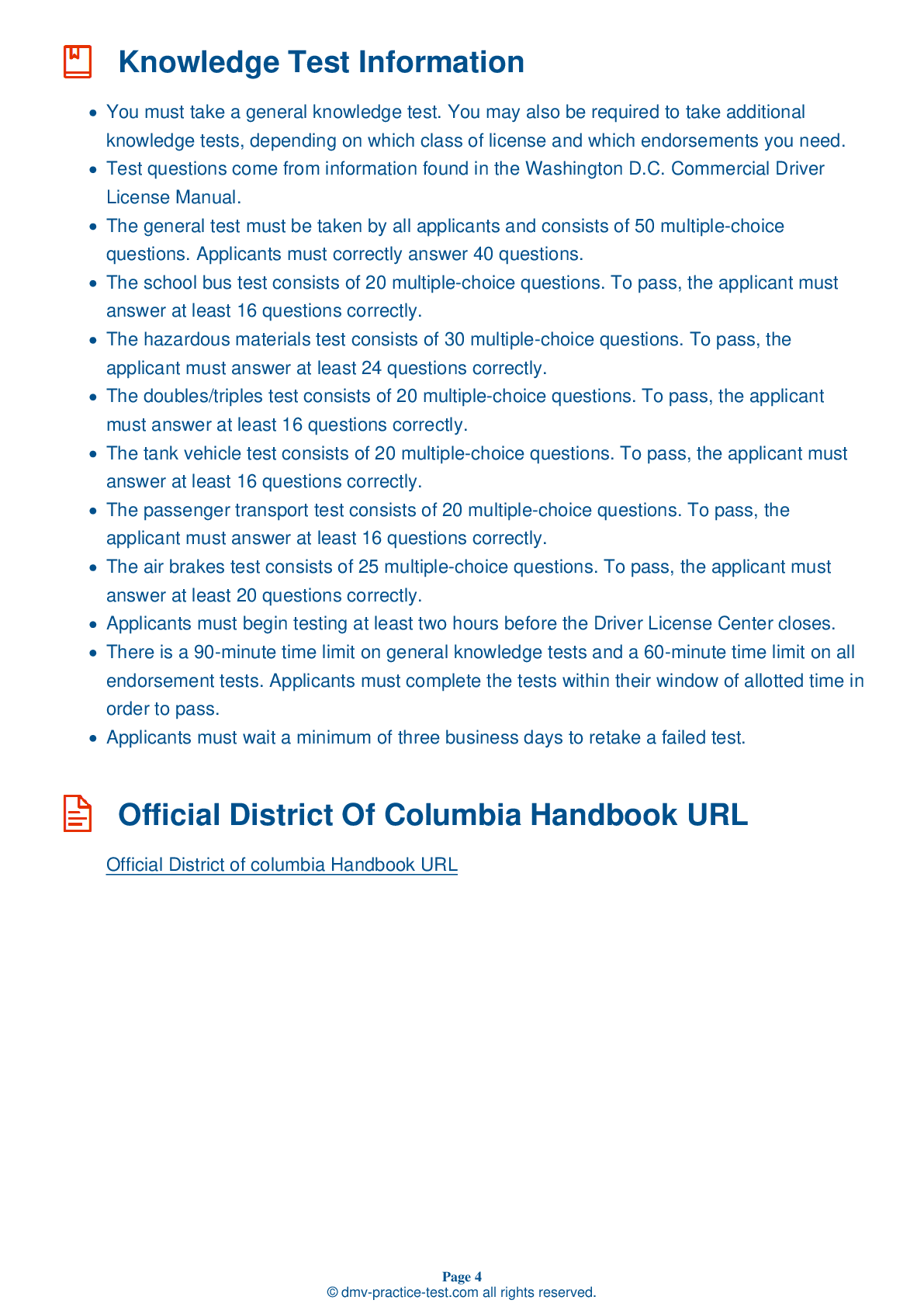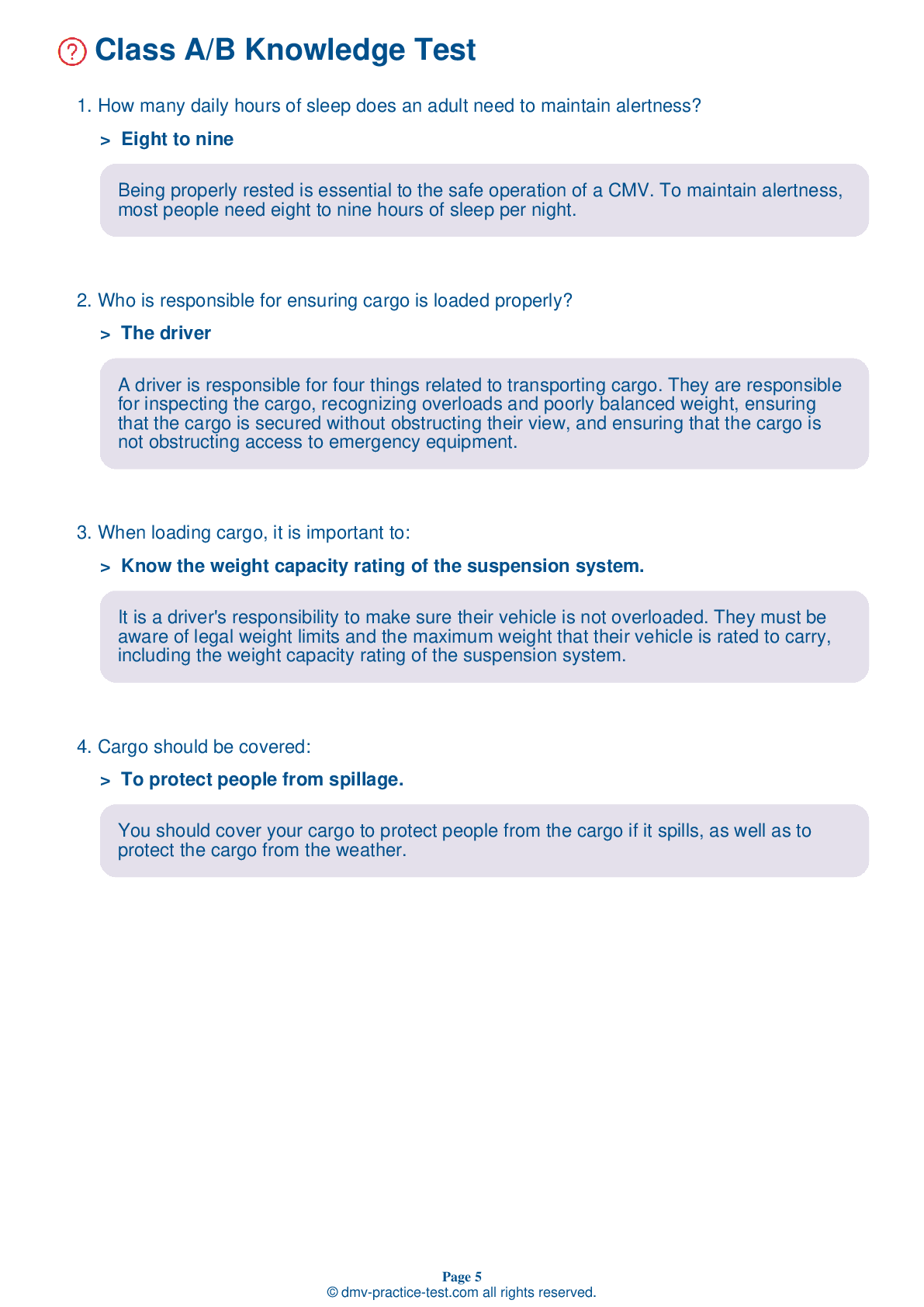Passenger Endorsement | District Of Columbia 2026 #2 Page 3 of 3
Train for FREE with our District Of Columbia CDL passenger endorsement practice test online. The official exam test consists of several obligatory parts, with all of them checking your knowledge of different blocks of road rules. If you need to obtain a DC DMV passenger endorsement in 2026, practice as much as possible. Free sample tests published on our website will help you check and improve your knowledge and boost your grades. Please bear in mind that DMV requirements for issuing a CDL permit with passenger endorsement may vary from state to state.
15 . Your vehicle's final position should be:
You should finish each exercise with your vehicle in the exact position described by the examiner. You can be penalized for failing to complete an exercise exactly in the manner described by the examiner, potentially resulting in failure of the basic control skills test.
16 . If you need to travel down a hill, you should switch into a lower gear:
Always downshift before beginning to drive downhill. Forcing an automatic transmission into a lower gear at a high speed could damage the transmission and also lead to a loss of ability to engine brake. Drive at a speed that will allow you to control your vehicle without overusing your brakes. When determining a safe speed to drive, you should take into account the steepness of the grade, the length of the grade, the weight of your vehicle, road conditions, and weather conditions.
17 . Regarding winter driving, all of the following are true, except:
When driving during the winter, it is particularly important that your tires have adequate tread. You need a tread depth of at least 4/32 of an inch in every major groove on the front tires, and at least 2/32 of an inch on the back tires. Check the tread depths by using a gauge.
18 . How can you avoid becoming drowsy on a trip?
Strategies to reduce the risk of fatigue while driving include getting seven to eight hours of sleep beforehand; scheduling trips for the hours during which you are normally awake; planning to take breaks during the trip; and exercising regularly.
19 . A vehicle inspection:
A vehicle should be inspected before every trip to help ensure that any small mechanical issues are caught before they become more serious problems. It is better to discover a problem with your vehicle before a drive than after the drive has begun.
20 . A bus driver is:
The driver's seat on a bus should be equipped with a seat belt. A driver is always required to wear a seat belt while driving a bus.
See the exact questions that will be on the 2026 District Of Columbia DMV exam.
99.2% of people who use the cheat sheet pass the FIRST TIME
Lillian MCcranie explains how our CDL study guide was helpful in passing the exam and recommends it to everyone.
Cameron tells us how he purchased the CDL exam, and found it to be a useful tool which helped him pass the exam and find a job.



